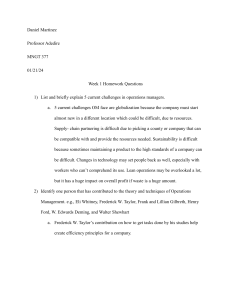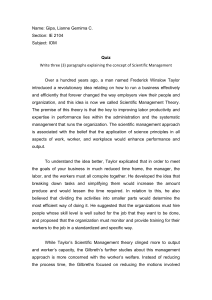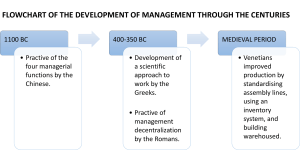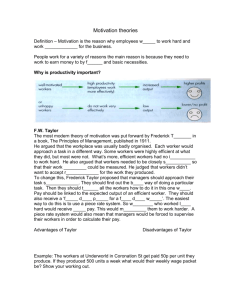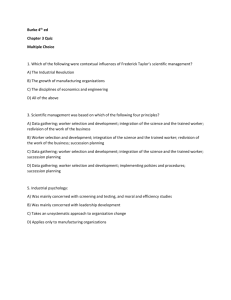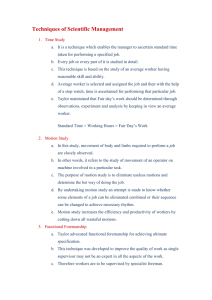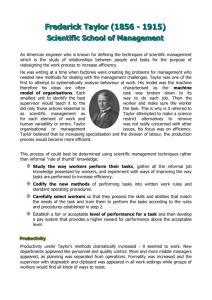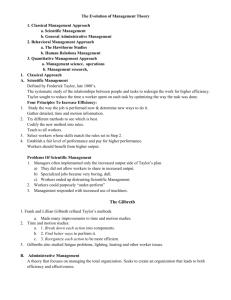II. Management Models
advertisement
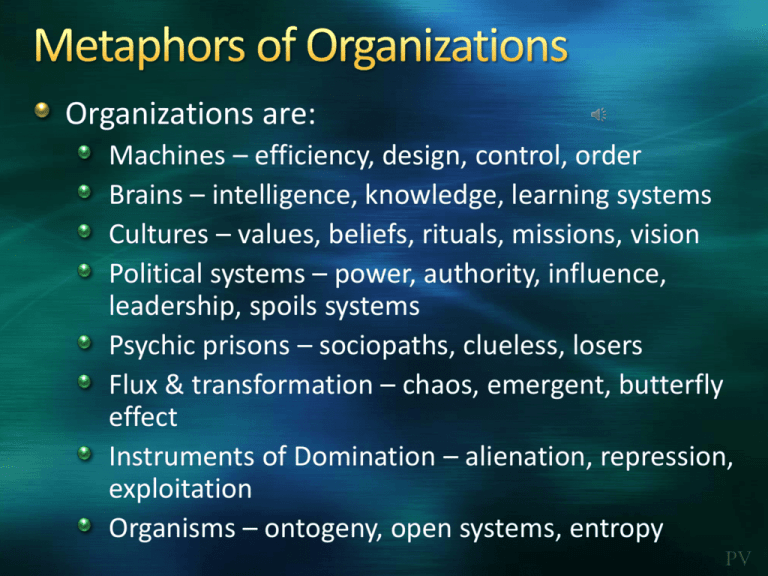
Organizations are: Machines – efficiency, design, control, order Brains – intelligence, knowledge, learning systems Cultures – values, beliefs, rituals, missions, vision Political systems – power, authority, influence, leadership, spoils systems Psychic prisons – sociopaths, clueless, losers Flux & transformation – chaos, emergent, butterfly effect Instruments of Domination – alienation, repression, exploitation Organisms – ontogeny, open systems, entropy PV Industrial Revolution Disruptive societal changes Fossil fuel energy Factory system Ensuing social chaos Prevailing Metaphor of the Age the ‘machine’ Characteristics of the machine Structure-Components-Process The earliest recorded use of the word “weekend,” occurred in 1879 in an English magazine called Notes and Queries: In Staffordshire, if a person leaves home at the end of his week’s work on the Saturday afternoon to spend the evening of Saturday and the following Sunday with friends at a distance, he is said to be spending his weekend at So-and-so.1 Max Weber Sir Francis Galton Frederick Taylor 1 http://www.theatlantic.com/business/archive/2014/08/where-the-five-day-workweek-came-from/378870/ PV Taylor, Frederick Winslow (a.k.a. ‘Speedy’ 1856-1915), American industrial engineer, who originated scientific management in business. In 1878, he began working at the Midvale Steel Company. He became foreman of the steel plant and applied himself to studies in the measurement of industrial productivity. Taylor developed detailed systems intended to gain maximum efficiency from both workers and machines in the factory. These systems relied on time and motion studies, which help determine the best methods for performing a task in the least amount of time. Taylor served as consulting engineer for several companies. His management methods were published in The Principles of Management (1911). To Maximize Performance & Efficiency • • • • Systematic selection of employees Training in the best methods Customized tools and work aides Incentives for good work Management & Employee Relations • Management accountability • Management ‘Plans’ the work and Employees ‘Do’ the work Characteristics of Employees ‘All the worker wants is money’ Theory X management • Hawthorne studies and World War 2 broadened recognition of social context variables as drivers of human behavior at work. • Work in this post-war period reflected a preoccupation with employee needs in all their complexity. Workers were no longer seen as working simply for a wage. • In response, a host of different need theories emerged, all of which somehow or other implicated worker participation as a panacea for industrial relations and productivity problems. Self-Actualization Esteem Social Safety Physiological PV This ‘new management philosophy’ came to be termed Theory Y management in contrast to the established assumptions of scientific management (Theory X). Theory X Employees wish to avoid work Employees shirk responsibility Employees must be coerced Employees seek security MGT role is to: control employees Theory Y vs. vs. vs. vs. Work is natural Desire responsibility Capable of self-direction Opportunities for growth develop employee potential Management training and education, leadership development, group processes, and employee attitude surveys were the rage. PV No single management style emerged as best suited for all situations. Slowing economic growth in the United States. Successful global competition of Germany and Japan. Increased cost of labor relative to capital expenditures for machinery. Movement into the workforce of a more diverse and better educated population of employees. Cynical use of human relations philosophy to obtain worker compliance in return for marginal gains in worker participation. PV Contemporary Management Theory Human Resources Frame Contingency Theory Total Quality Management Open Systems - diversity - if x then y, else z - customer focus - biological metaphor - empowerment - truth boundaries - system factors - development - Fred Fiedler & Frederick Herzberg - statistical quality control - interdependence of subsystems - entire person - Rosabeth Moss Kanter - continuous improvement - W. Edwards Deming & Joseph Juran - input–thru put-output - entropy - Daniel Katz & Robert Kahn
